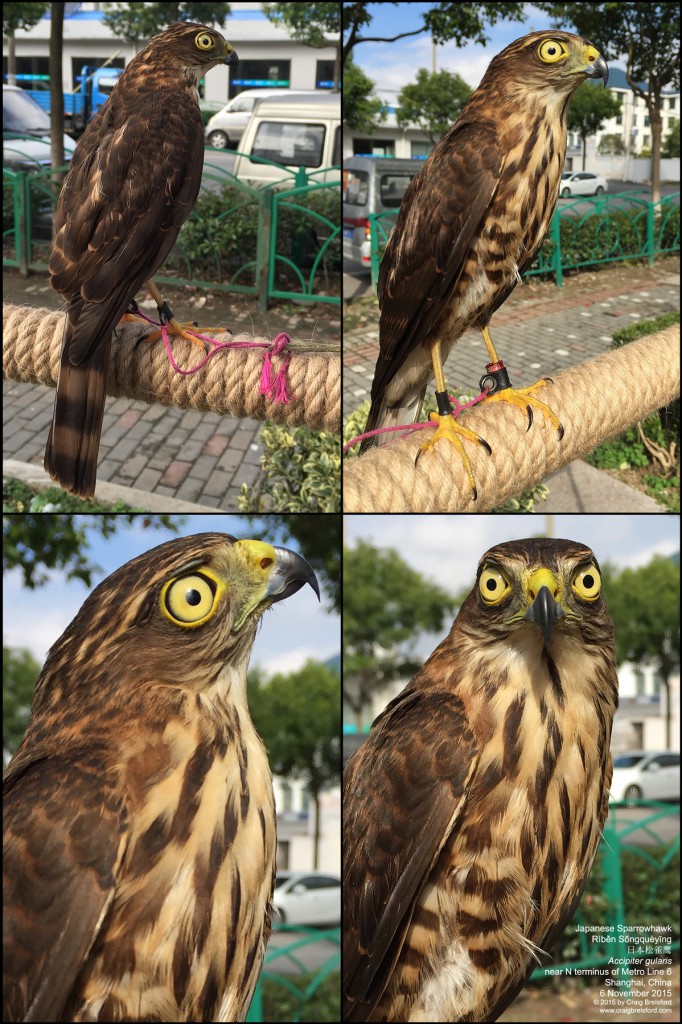
by Craig Brelsford
Founder, shanghaibirding.com
Elaine and I did a double-take today when, walking from the bus stop to the metro after birding Binjiang Forest Park here in Shanghai, we saw a Japanese Sparrowhawk on a specially made perch. I asked for the owner, who came out and told me his pet was legal, since he’s “raised him since he was young.” To prove his claim, he pointed out the ring on the sprock’s left tarsus, which displays his phone number. I still didn’t believe the sprock was legal, but I left off arguing with him, in part because I wanted to study his bird. It’s a real beauty, a juvenile in good condition. I must say I loved the opportunity to see a sprock up close. The first thing that struck me was the slightness of the bird—no bigger than a kestrel. Close inspection of the talons and bill brought home the reality that sprocks are meat-eaters, born for the hunt. And the eyes! Imagine if humans had eyes so large in proportion to the rest of the face. We would look like aliens. What visually biased creatures birds are, and especially sprocks. I identified this bird as Japanese Sparrowhawk on the basis of its small size, gular stripe, and combination of barring and streaking on the underparts. This bird wasn’t panicking at the sight of us, but it was jumping around a lot, suggesting that it had been caught recently.

Are you sure this is a Japanese? The tail bands look broad, about the same width as the paler bands, as in a Besra.
Hi Craig,
I am interested to know how you identified this bird as a Japanese Sparrowhawk and not as a Besra. I thought the dark tail bands in a Japanese are narrower than the pale bands. In a Besra, the dark bands are equally broad. This bird here has rather broad dark bands that fit a Besra, and the primary projection also seems shorter. I would really appreciate if you can clarify my doubt.
I referenced your image against this image found online, which seems to be of similar age.
http://orientalbirdimages.org/birdimages.php?action=birdspecies&Bird_ID=905&Bird_Image_ID=140826&Bird_Family_ID=